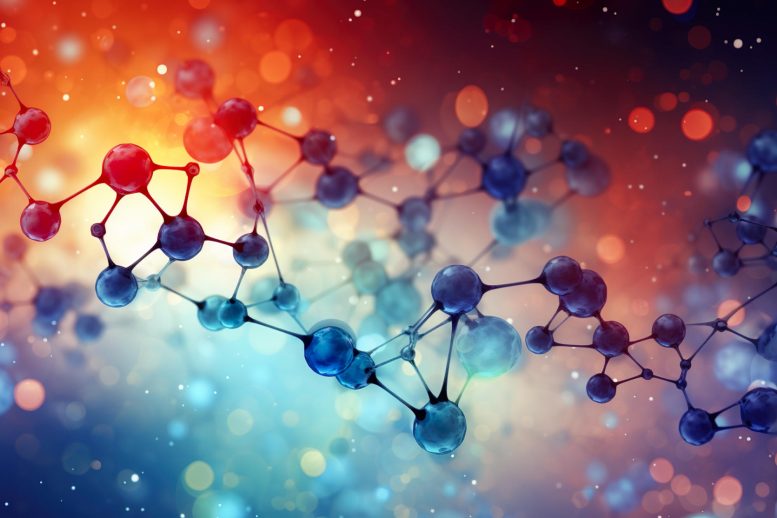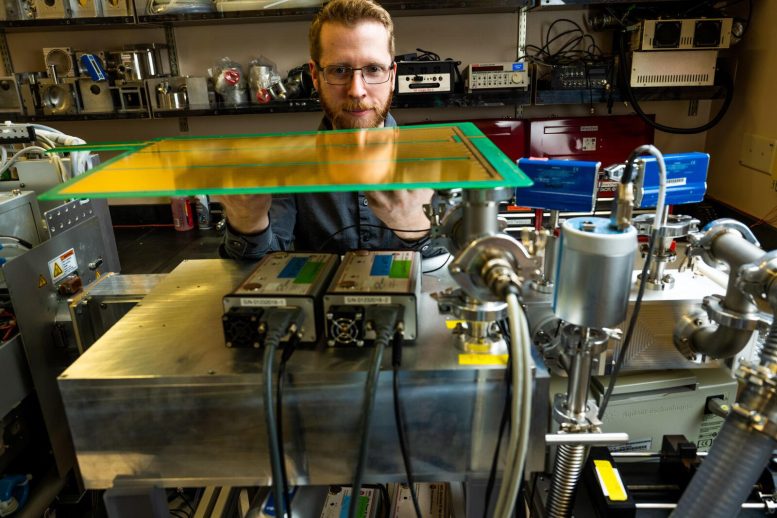Science & Nature

Scientists at the Department of Energy’s Pacific Northwest National Laboratory are developing new mass spectrometry techniques to identify the 99% of chemical compounds not yet characterized. Combining two high-resolution instruments, they aim to unlock potential cures for diseases, tackle climate change, and identify new chemical threats.
New mass spectrometry technique holds the potential for exploring nature’s unknown chemical universe.
The universe is awash in billions of possible chemicals. Despite the arsenal of advanced technology at their disposal, researchers have only identified the molecular makeup of a minuscule portion, perhaps around 1 percent, of these compounds.
Scientists at the Department of Energy’s Pacific Northwest National Laboratory (PNNL) are taking aim at the other 99 percent, creating new ways to learn more about a vast sea of unknown compounds. There may be cures for disease, new approaches for tackling climate change, or new chemical or biological threats lurking in the chemical universe.
The work is part of an initiative known as m/q or “m over q”—shorthand for mass divided by charge, which signifies one of the ways that scientists measure chemical properties in the world of mass spectrometry.
“Right now, we can take a sample from soil, where, depending on soil type, there may be thousands of chemical compounds in just a teaspoon’s worth,” said Thomas Metz, who leads the m/q Initiative. “And we don’t know what most of them are in terms of their chemical structures. We simply have no idea what’s in there.”
Scientists typically rely on reference libraries that contain information about thousands of molecules to identify substances. Researchers sort their samples from soil, the body, or elsewhere and compare what they have measured experimentally to what’s in the library. While that’s helpful, it limits scientists to only structurally identifying molecules that have been seen before—for example, through analysis of standard compounds purchased from chemical suppliers.

Adam Hollerbach with a SLIM device created at Pacific Northwest National Laboratory. Credit: Andrea Starr | Pacific Northwest National Laboratory
m/q scientists are taking aim at the other 99 percent that haven’t been identified—yet.
In the latest development, a team led by scientist Adam Hollerbach has combined two high-resolution instruments into one system to size up molecules in unprecedented detail. The results were published online June 12 in the journal Analytical Chemistry.
Now, scientists can make several important measurements about chemical compounds in one experiment, gaining important information faster, more conveniently, and more accurately than before.
Hollerbach’s technique applies to ions—molecules that have either a positive or negative charge. That makes them easier to control and possible to detect using mass spectrometry.
Mass spectrometry: tool of the ion whisperers
Like the people who study them, ions have many features that distinguish one from another. In people, weight, hair color, size, shape, eye color, and many other characteristics help us know who’s who. For ions, identifying characteristics include mass, shape, size, electric charge, and chemical composition. Those not only serve as identifiers but also as guides to the associated molecules’ behavior—clues to their potential to cure disease or sop up pollutants, for example.
That understanding should help the efforts of scores of scientists at PNNL who focus on understanding the effect of microbes on climate. Microbes play a key role in transforming elements like carbon into other forms that are important for the planet. Their impact on warming or cooling the planet is mighty. But scientists have much to learn.
“There may be millions of microbes in just a gram of soil, and we don’t know who most of them are or what they do. There’s a lot of discovery still to happen,” said Metz. “From the viewpoint of challenging science, it’s either a worst-case scenario or one of our greatest opportunities, depending on how you look at it.”
m/q scientists are seizing the opportunity. Instead of framing their questions within the relatively small number of compounds that can be identified in conventional mass spectrometry measurements, they’re trying to leapfrog current limitations and create a whole new way of identifying what is unknown today. It’s a bit like when a new telescope is deployed and reveals several distinct stars where before, just one blurry hodgepodge of celestial bodies was visible.
The work is both experimental, putting molecules through their paces in the laboratory, and on computers, where scientists model what they are seeing and predict what they will likely see.
In the experiments described in the Analytical Chemistry paper, Hollerbach and colleagues made sensitive measurements of peptides and lipids. The experiments combined two instruments with similar names but that provided different details about ions. Both are used in mass spectrometry, a field whose history is interwoven with discoveries by PNNL scientists.
The first instrument is a mass spectrometer, which measures an ion’s mass, electric charge, and how the ion breaks apart. In this study, the team used an Orbitrap developed by Thermo-Fisher Scientific. Such instruments sort molecules of different masses well, but two molecules with the same mass are difficult to separate. Think of two people, each weighing 180 lbs.—one is tall and thin while the other is short and stocky. On a scale alone, they would be impossible to separate.
A SLIM approach: ion mobility spectrometry brings hefty results
The second instrument is known as SLIM: structures for lossless ion manipulations. SLIM, created by PNNL scientist Richard D. Smith and colleagues, is an ion mobility spectrometer that measures an ion’s size and electric charge.
SLIM, which is about the size of a laptop and stands at just one-quarter of an inch thick, is a hothouse of molecular activity. Dozens of long, winding paths transform the small device into a 42-foot-long molecular racetrack, with ions that are controlled tightly by electric fields racing round and round an oval obstacle course.
The “obstacles” are other, known molecules such as helium or nitrogen molecules. As the ions under study race through the SLIM device, they navigate around or through the other molecules, tumbling and swerving much like a football running back runs through and around opposing blockers. The term “ion mobility spectrometry” truly captures the action.
By recording how long it takes for the ions to complete the course—how deftly they navigate the blocking ions—scientists learn all kinds of things about ions’ shape and size. That information, which isn’t available from a standard mass spec instrument, is combined with data about the ion’s mass, electric charge, and fragmentation pattern. Altogether, the data yields the ion’s collision cross section, its molecular formula, and its fragmentation pattern, properties that are central to understanding a molecule’s structure.
“Two different molecules can have the same number of atoms, and the same mass and charge, but they could have very different structures and activity. That’s where SLIM comes in to tell the difference,” said Hollerbach. “Just one small change can mean the difference between a molecule that is indicative of a disease and one that’s not.”
The key to Hollerbach’s experiment was getting the two different instruments to play nicely together. While both standard mass spectrometry and ion mobility spectrometry analyze ions, they work on different time scales. Ions make their journey through SLIM and arrive at the Orbitrap faster than they can be processed.
So Hollerbach drew on an old technique, deploying “dual-gated ion injection.” He added gates to control the intake of ions into the system and to control their arrival at the Orbitrap, choosing to send some of the ions from SLIM into oblivion to keep the flow at a manageable rate.
“Really, the questions we ask are very simple,” said Hollerbach. “What is this, and how much is there? But the techniques we use are complex.”
Other m/q scientists are working on additional ways to identify or exploit unknown molecules. Some are creating ways to use data like that from Hollerbach’s experiment to predict an ion’s structure automatically, so drug makers and other scientists would know exactly what they’re working with. Others are scouting out the millions of possibilities for forms of compounds such as DOI: 10.1021/acs.analchem.3c00881
The work described in the Analytical Chemistry paper was funded by the m/q Initiative at PNNL. The mass spectrometry measurements were made at EMSL, the Environmental Molecular Sciences Laboratory, a DOE Office of Science user facility at PNNL.
In addition to Hollerbach and Metz, PNNL authors of the paper are Yehia M. Ibrahim, Vanessa Meras, Randolph V. Norheim, Adam P. Huntley, Robert G. Ewing, and Richard D. Smith. Gordon Anderson, formerly of PNNL, with GAA Custom Engineering LLC in Benton City also contributed.
Read More
Pacific Northwest National Laboratory
